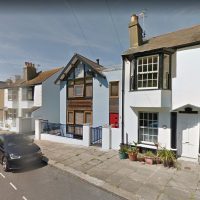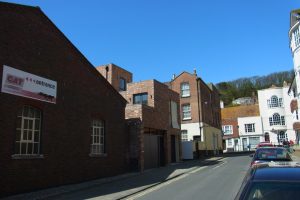


WORKING TOGETHER TO IMPROVE DESIGN
WHAT IS DESIGN AND GOOD DESIGN?
“Design is a creative activity, and definitions of quality in design are elusive. It cannot be reduced to codes and prescriptions; and even in those areas where there appear to be codes-such as classical architecture-the best examples often break or transcend the rules. It is possible, however, to distinguish good design from bad design. By good design we mean design that is fit for purpose, sustainable, efficient, coherent, flexible, responsive to context, good looking and a clear expression of the requirements of the brief. We believe that assessing quality is to a large extent an objective process. Ultimately, of course, some questions come down to matters of individual taste and preference. It is not often, however, that questions of this kind are important in deciding whether a project, judged in the round, is a good one. What matters is quality, not style.” – Paul Finch, former Chair, Design Review Committee, Commission for Architecture and the Built Environment (now part of The Design Council) also Chair of Judges for the Hastings Pier competition in 1990.
DESIGN PANELS
The recently published National Planning Policy Framework now requires Local Authorities to have local design review policies in place. A properly constituted Design Panel is a convenient and transparent way of achieving this. Design Panels usually comprise planners from the Local Authority working together with volunteer architects (supported by the Royal Institute of British Architects) and other design professionals who together offer design advice and guidance on projects which may come forward for planning approval.
Panels are now established in many Local Authorities, Eastbourne being the closest we are aware of, and are most effective when schemes are brought to them at an early stage in the design process. Given recent changes in planning legislation within the Localism Bill it is now even possible to include Councillor members to the panel which leads on to:
DESIGN CHAMPIONS
Design champions, consisting perhaps of one Councillor from each leading party and one officer (not necessarily a planner) who can both add to the diversity of the Design Panel and act as a public statement that the authority supports and promotes improved design standards. Champions would, of necessity, need to have some design training and the commitment to visit completed projects recognised to be of high design standard.
DESIGN CODES
Design codes for Ore Valley have long been abandoned by Hastings Borough Council, yet there is evidence from other Authorities that non-prescriptive codes can help to create a framework for good design. An examination of why they failed in Hastings and how they succeed elsewhere might be beneficial.
CONSERVATION AREAS AND CONTEMPORARY DESIGN
Many places within the South-East, such as Lewes and Canterbury are more open to contemporary design within Conservation Areas than Hastings. Rother also has some good examples of contemporary houses within it’s area.
Is it expectations that are lower in Hastings, or an in-built resistance to change? There was a time when the Old Town was new, and Burton’s St Leonards was ahead of it’s time. Maybe it’s time to welcome more good contemporary design into the mix? Sensitive, high quality modern design, which is responsive to it’s location can often be a more fitting solution than poorly thought through pastiche.
There are a few examples of innovative design in the Borough, some built, some still in planning, but perhaps too few.
New Design in Historic Settings (link) – a publication by Historic Scotland outlines an approach to design in sensitive areas which has a relevance beyond the Scottish border, and could be helpful as a guide to determining appropriate development within Hastings.